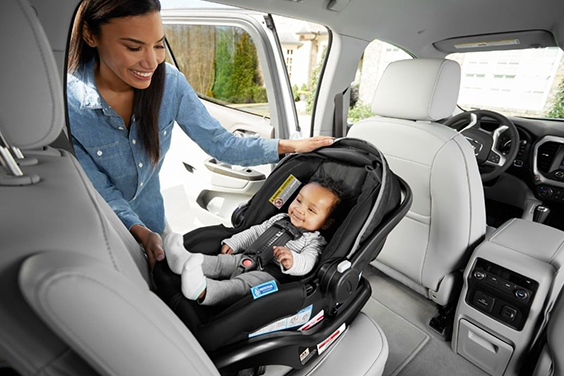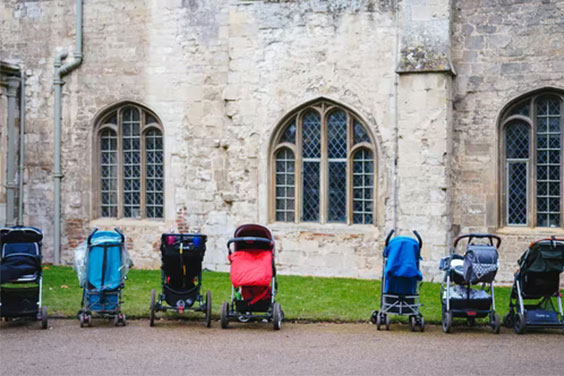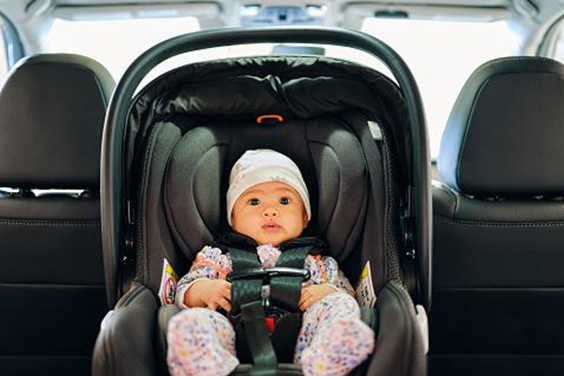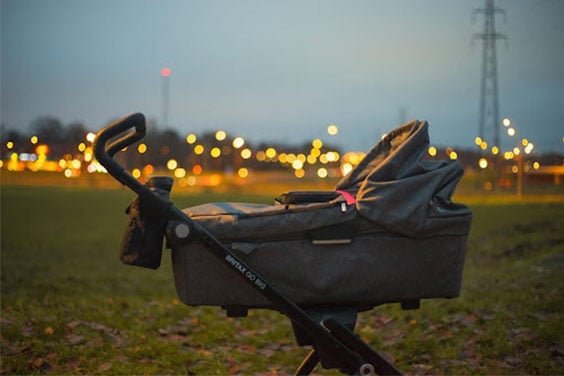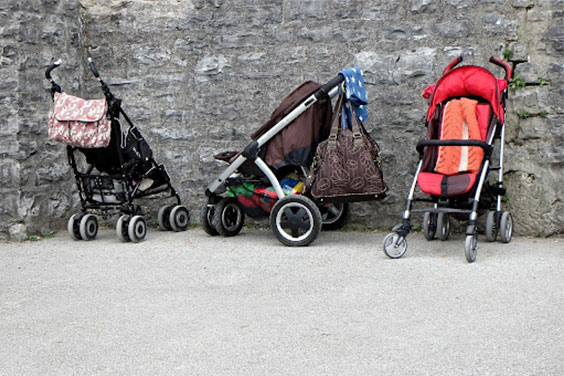Your child needs a car seat, which is an absolute requirement created to keep your youngster safe while being transported. One of the most crucial pieces of equipment you’ll buy as a new parent is a car seat. It is among the very few things you will ever purchase for your child that could actually save their life. Before your child is even born, you will need a car seat since you will need one in the car if you plan to drive your newborn home from the hospital.
There are numerous sorts of baby car seats from which to pick. The type of baby car seat you select will depend on your lifestyle, your budget, your child’s age, height, and weight, among other factors. In today’s blog, we are going to talk about different types of car seats that you can to help you decide the best one for your child.
There are five categories of car seats:
- Infant car seats
- Convertible car seats
- Booster seats
- 3-in-1 Car Seat
- Combination car seat
- Infant Car Seats
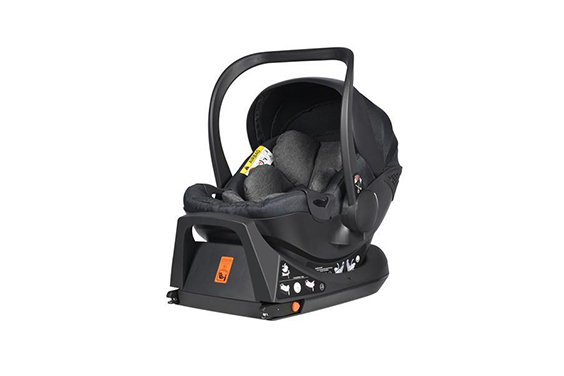
This car seat is intended for newborns and infants, as the title indicates. This kind of car seat is often used from birth until your child exceeds the weight limit of the seat, which is usually around age 2, or until that point. Rear-facing car seats are made to only be used in this position in your car because it is the safest one for young children to ride in.
Given that they frequently also serve as carriers, infant car seats make excellent first seats. Both a base that is permanently fastened to the car seat and a direct car seat attachment are options. Additionally, since you can purchase additional car seat bases to attach to your other vehicles, this is an excellent seat to get if you own more than one car.
Depending on how quickly your child grows, these seats will only last you two years. Some people reach the weight cap before they turn two. However, the general rule is that it’s time to move seats once your child reaches the maximum weight or height restriction of the seat.
Best for: Newborns and infants weighing less than 32 pounds, whose parents choose to move the car seat from one car to the next or carry it around.
- Convertible Car Seats
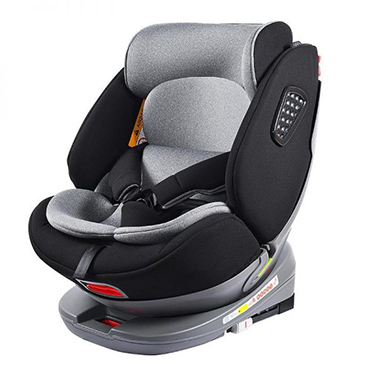
Convertible car seats are the best baby car seat options if you want to get the most value for your money. These chairs can be utilized from the time your child is born until they are no longer in need of a seat at all.
These infant car seat models can be used either rear-facing or forward-facing. The height and weight of your child will determine whether you should use it rear-facing or forward-facing. Rear-facing is typically utilized for newborns and young children up to the age of three.
However, as it is the safest position to travel in, safety experts advise keeping your child in the rear-facing position as long as possible. Children who are three years old and older can begin using forward-facing car seats.
There are drawbacks to both baby car seat varieties, despite the fact that the convertible car seat is ideal for parents on a budget. To begin with, the convertible car seat is not a carrier, unlike the baby car seat. In actuality, this kind of car seat isn’t at all portable and is typically fairly large and bulky. They are difficult to transfer from one car to another and lack detachable platforms.
This works great if you just have one car, a child carrier that you already own or don’t use, or both. Additionally, convertible car seats are the ideal present for loved ones who frequently watch your child, including the baby’s grandparents.
Best for: Kids weighing 4 to 65 pounds with families that intend to use the seat from infancy through early childhood and who are willing to purchase separate seats for each vehicle or move the seats as necessary.
- Booster seats
You won’t need to buy another seat for your youngster after this one. Booster car seats are only used while the child is facing forward. These seats call for your youngster to weigh at least 30 to 40 pounds, depending on the model.
The seat belt system in your automobile may be used instead of the normal buckles or harnesses that come with this kind of car seat in some cases. The latter baby car seat type is typically more affordable and practical, but you should choose one based on your child’s height. When shopping, take your youngster along to see which is the comfiest for them.
Given that children may require a booster seat starting at age three and continuing through the start of school, this seat will likely serve you the longest out of all the baby car seat varieties. Make sure to spend money on a strong, high-quality seat because you’ll be using it until your child is old enough or large enough to be able to utilize the conventional seatbelts in the car.
Best for: Children between the weights of 40 and 120 pounds who are prepared to switch from a car seat to one they don’t.
- 3-in-1 Car Seat
From a rear-facing car seat to a forward-facing car seat and high-back booster seat, the 3-in-1 seat may be changed. The benefit of these seats is that you may save money and make adjustments to your developing child’s needs while using them for the entire time your youngster needs a car seat.
Because they lack handles, these seats are frequently useless as carriers. Rear-facing car seats can normally hold infants weighing up to 5 pounds, and they can be modified as your child grows.
Best for: Babies and young children weighing up to 100 pounds, with families who want to use the seat from the time the kid is born until they are no longer in need of one.
- Combination Car Seat
Combination car seats are forward-facing car seats that can be converted to booster seats at a later time for children who are getting older and need a front-facing seat. When utilizing the seat as a front-facing seat, they can be buckled into a harness. To utilize the seat as a booster only, the harness can be taken off.
Best for: Growing kids between the weights of 22 and 100 pounds who need a front-facing seat that can convert to a booster seat later on.
Why Installation Is Important for Car Seats?
Although picking the right car seat is crucial, properly installing it is the most significant step. No matter the baby car seat type you select, it is essential for your child’s safety that it is placed properly. If one is installed improperly, it basically has no function at all. Different kinds of car seats have different installation methods. There are also different types of car seats for different ages.
The most frequent errors are incorrectly inserting seat belts into the slots, failing to use a locking clip when one is necessary, fitting the seat too loosely, and forgetting to buckle the child in. A properly placed car seat won’t move at all—not even a millimeter forward or to either side. LATCH (Lower Anchors and Tethers for Children) is a commonly used method of installing car seats since it is a standardized procedure. To help you install a car seat, you can quickly find online instructions for the LATCH system.
Cost of Car Seats
A car seat can cost as little as $50 or as much as $1,000, but buying a more expensive seat does not always guarantee that your child will be any safer than if you buy a less expensive one.
More deluxe cushioning, a no-rethread harness, additional reclining positions, and safety features like additional shock absorption or a stability leg for added support in the case of an accident are all common extras found on more expensive car seats.
However, there are still several mid- to low-cost car seat models that perform as well as or better than some more expensive selections; you simply need to choose what your budget permits and match that with what is ideal for your specific vehicle.
Tips for Using Car Seats
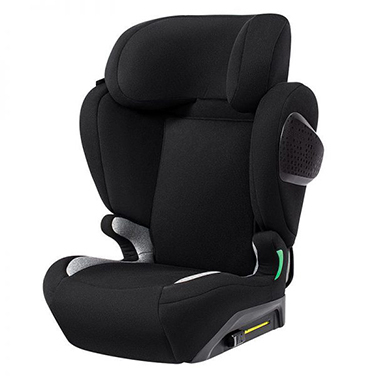
- Before taking your infant on his or her first automobile ride, practice buckling the seat. Ensure that your baby’s body is properly cradled by the harness straps. If the child is a newborn, use the lowest harness slots. For the rear-facing position, keep the straps in the slots at or below your baby’s shoulders.
- It’s crucial that the harness straps fit comfortably over the shoulders and in between the legs. Put your infant in clothing that leaves their legs unrestricted.
- Roll up a few small blankets and put them between your baby’s shoulders and head on both his right and left sides to fill in any voids and provide support. If they continue to sag, tuck a wrapped diaper behind the crotch strap between their legs. Avoid placing significant padding behind or beneath the infant.
Conclusion
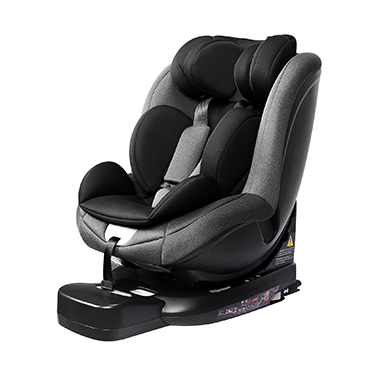
Whether the car travel is short or lengthy, your child will be safe and comfortable thanks to the car seat model you select. You’ll be able to choose a car seat that suits your needs and your lifestyle by doing your homework and learning more about each type of seat.
Contact River Baby and we’ll be happy to help you if you still need assistance with selecting the right car seat or if you’ve already purchased a seat but need help installing it. River Baby is one of the biggest baby product suppliers available in the industry. River Baby is also an expert infant car seat manufacturer and baby car seat supplier.
Our team is knowledgeable about child safety, and we would be delighted to assist you in any way that you require.
